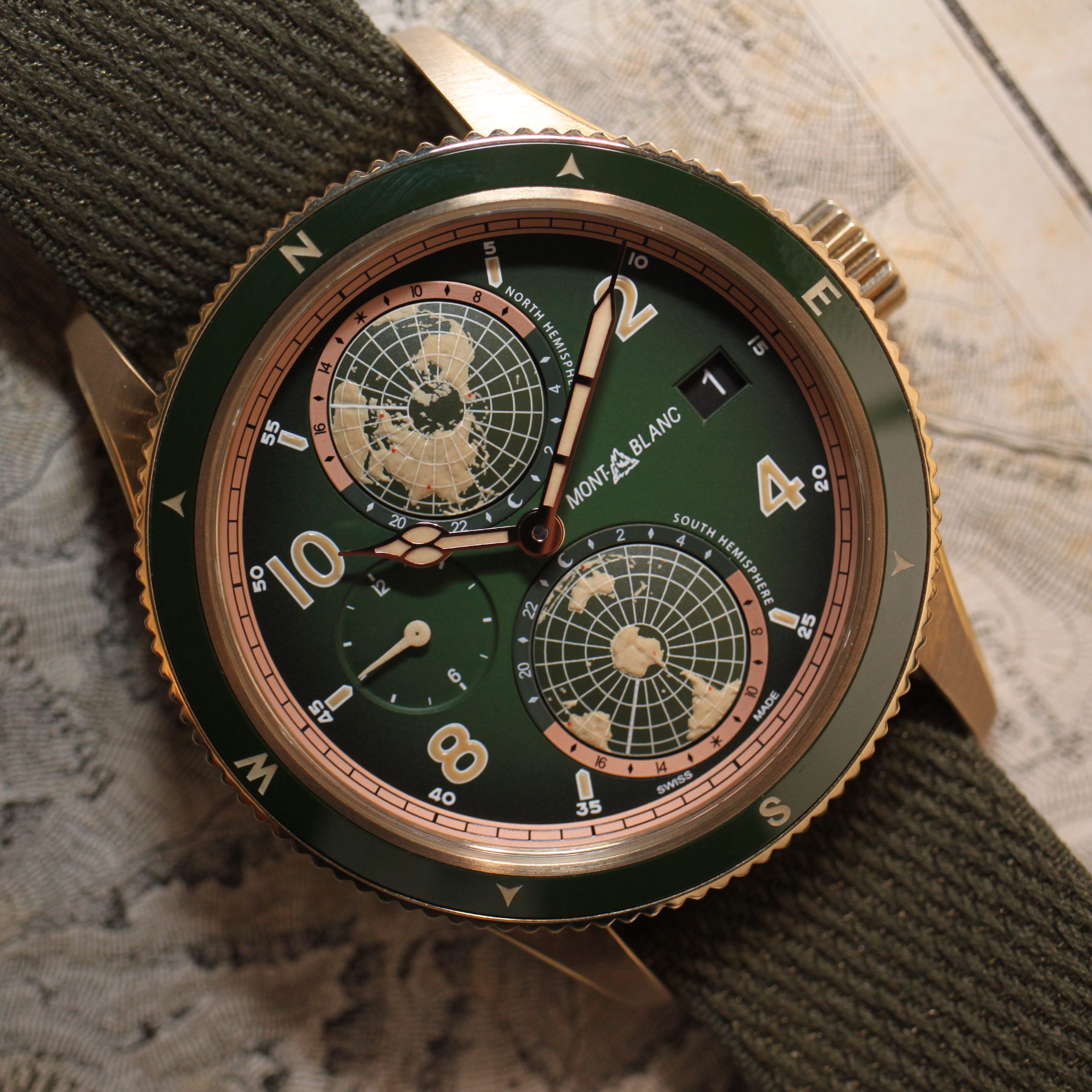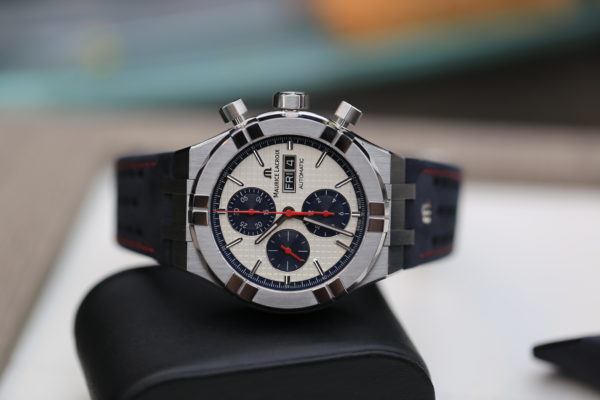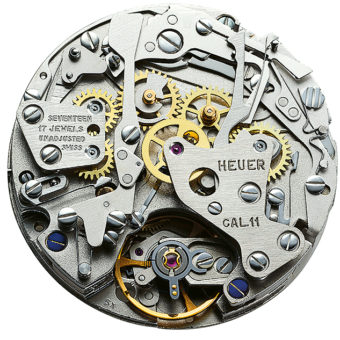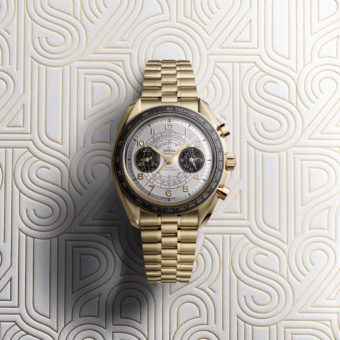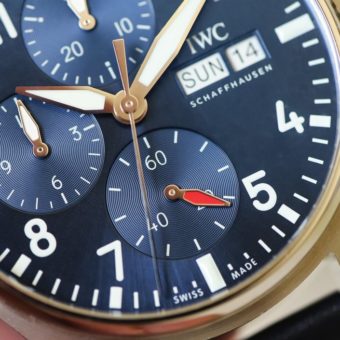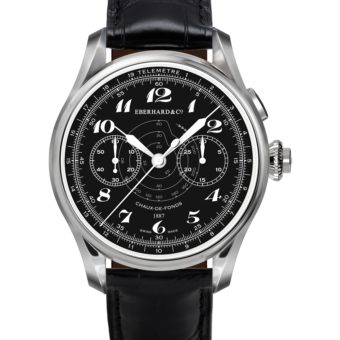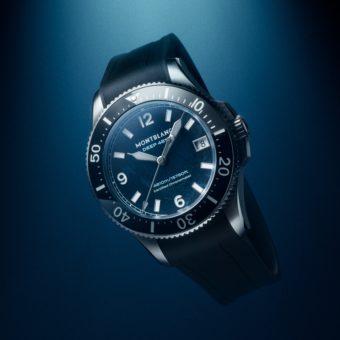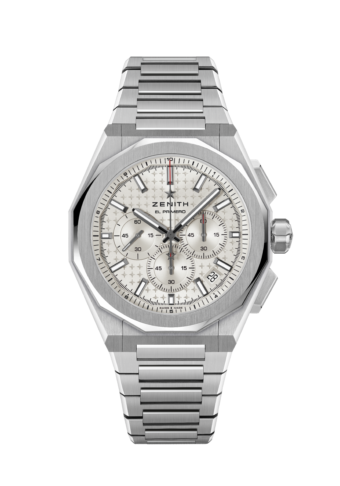As we previously announced, WatchTime is bringing the WatchTime New York event concept to the West Coast on May 3 – 4, 2019. We’ll be taking over the Hudson Loft space in Downtown Los Angeles — just minutes from Staples Center — for two days to bring you the best in luxury timepieces. For those who have attended the New York show before, you can expect a similar experience, with brands of all sizes and price points taking part; an abundance of panel discussions featuring industry VIPs, brand executives, and high-caliber collectors; wine and whisky tastings; and plenty of opportunities to spend some quality time with your fellow enthusiasts. We’ll be collaborating with our longtime event partner Watch Anish once again, and will be working with the renowned California retailer Bhindi Jewelers for the first time.
Today, we’re happy to announce the third batch of the 30+ brands we have confirmed for the show. Click here to see the first six brands we announced on March 1, and here for the second six, announced last week.
Czapek & Cie.
Eberhard & Co.
HYT
Maurice Lacroix
Montblanc
Scroll down to learn a little bit more about these six brands and stay tuned for the next set of brand announcements to be revealed after Baselworld.
You can buy your tickets here and we hope to see you there!
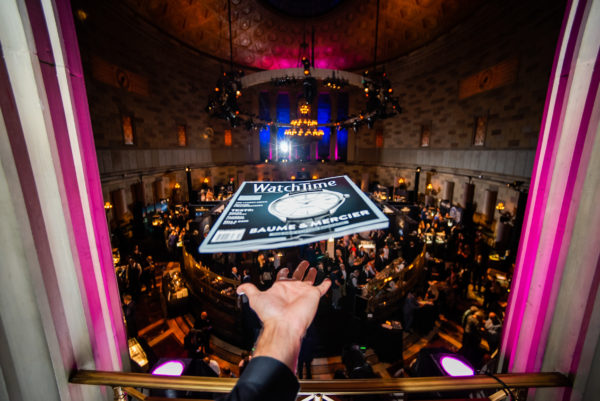
Armin Strom
For a relatively young brand, Armin Strom has, in rather short order, joined the ranks of watch manufacturers — like Panerai and Richard Mille — whose products are identifiable across the room. The Armin Strom “look” owes largely to the brand’s focus on skeletonization, the specialty of the brand’s founder and namesake, Swiss watchmaker Armin Strom. The brand’s owners, Strom family friends Serge Michel and Claude Greisler, have since expanded from skeletonization to ever more complex mechanisms, like the recent models based on the concept of resonance. Resonance timepieces generally involve two independent mainsprings, gear trains, escapements, and balances that are connected by a rack and pinion to allow exact tuning of the distance between each of them. When the two oscillators (all of the above combined) are beating in sync, they are able to find a concurrent rhythm in opposite directions that continuously averages out errors. Basically, the two “resonating” balances offer higher accuracy, energy conservation, and overall better stability. The most recent model to employ this concept is the Masterpiece 1 Dual Time Resonance, introduced at SIHH 2019 (below), which features two independent time zone displays, powered by two separate movements, in a transparent sapphire case that offers a view into its horological complexity. For more on this watch, click here.
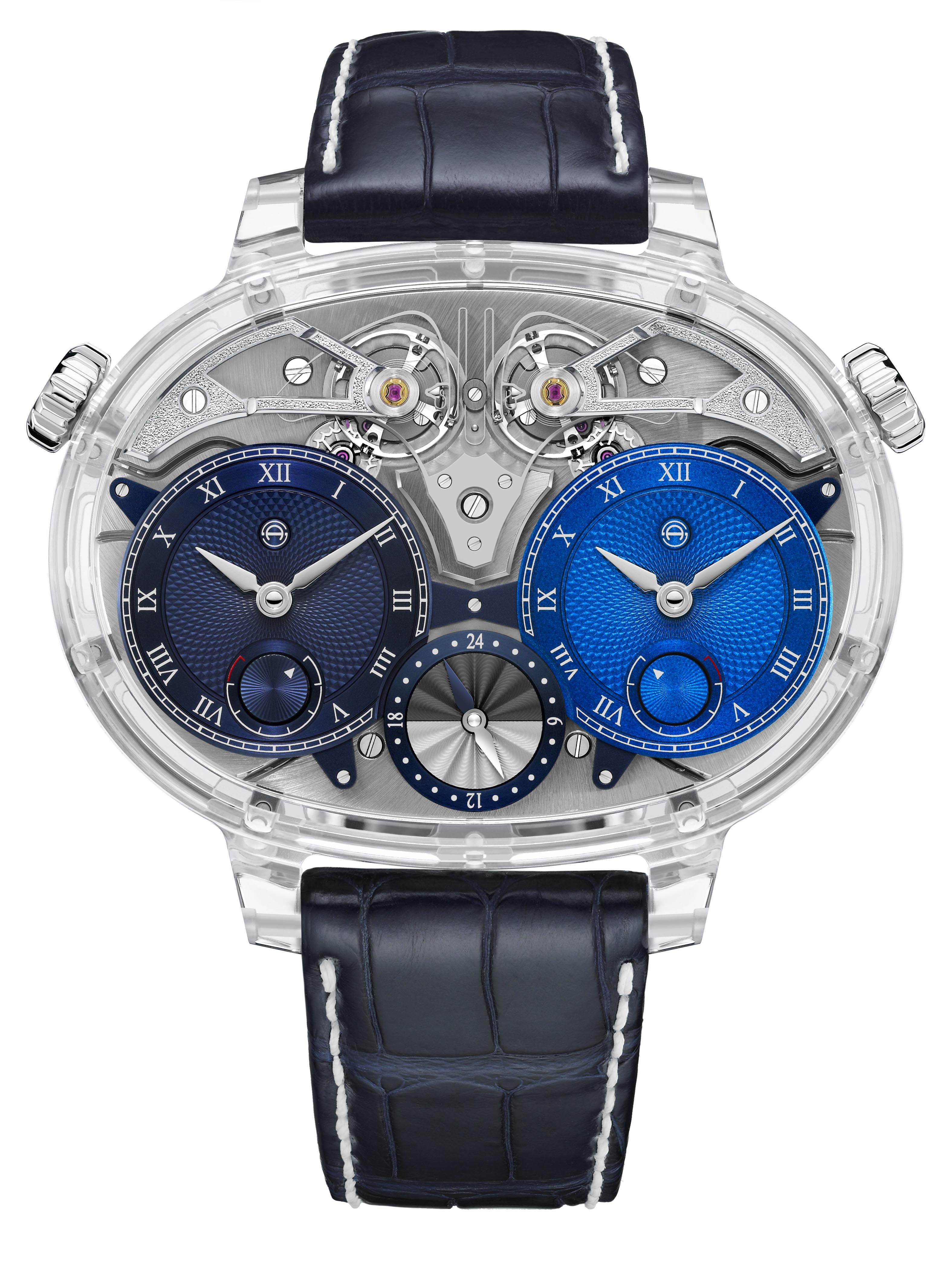
Czapek & Cie.
Czapek is named for François Czapek, a 19th-century Polish watchmaker who was the original partner of Antoine Norbert de Patek (of Patek Philippe) before leaving the nascent brand to form his own watchmaking atelier, Czapek & Cie, in 1845. A Polish immigrant in Geneva, he is credited with opening what is considered the first watch boutique on the Place Vendôme in Paris and served as the official watchmaker to Napoleon III during his lifetime. After his death, the brand slowly faded into obscurity until it was finally revived in 2015. In the subsequent years since the brand’s resurrection, Czapek & Cie. has claimed the Public Prize at the Grand Prix de l’Horlogerie for the Quai des Bergues timepiece in 2016 and released a second collection featuring a suspended tourbillon with GMT. In 2018, Czapek announced its third collection, featuring its first contemporary chronograph: the Faubourg de Cracovie (the panda-dialed “Dioné & Rhea” version pictured below) named after the location of François Czapek’s third boutique in his home country of Poland.
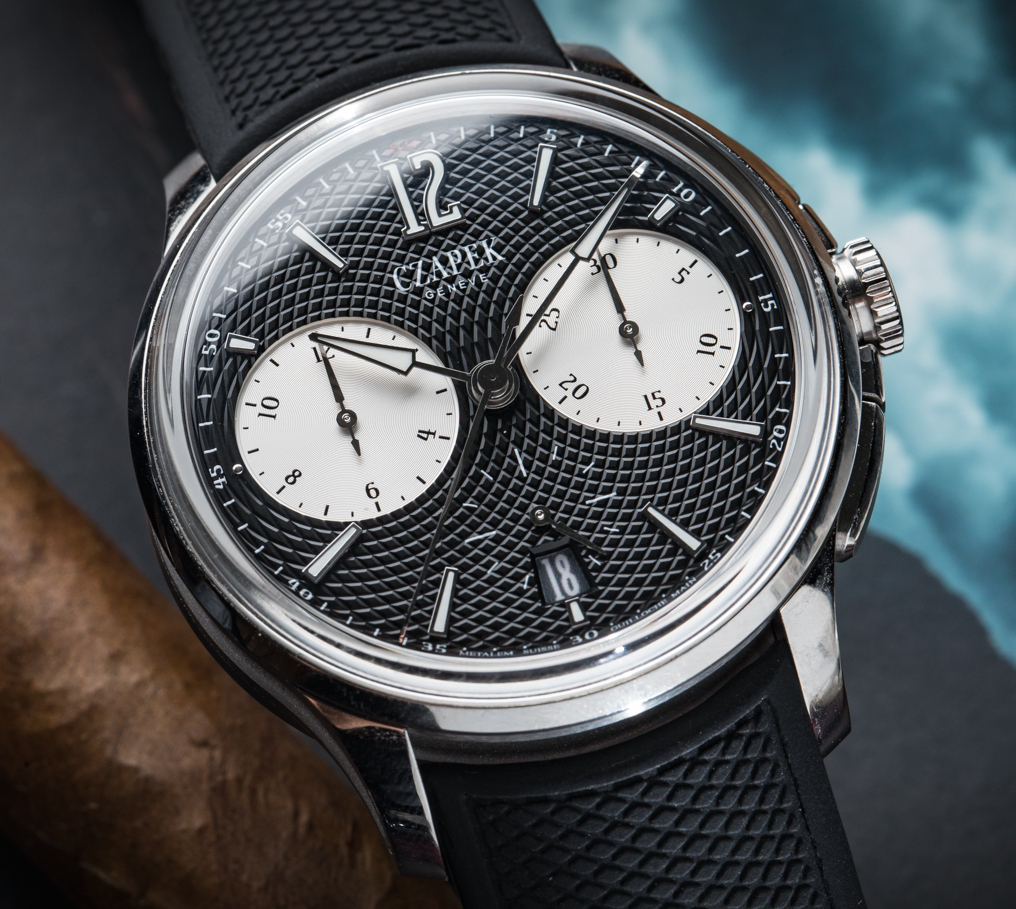
Eberhard & Co.
Eberhard & Co. is a Bienne-based watch manufacturer, popular throughout Italy while known to just a relative handful of collectors here in the States, which continues to innovate after 130-plus uninterrupted years. Founded in La Chaux-de-Fonds by 22-year-old Georges-Lucien Eberhard, whose Bernese family traced its watchmaking heritage back to the 10th century, Eberhard & Co. adopted the chronograph as a specialty from very early on, developed such enduring classic models as the Extra-Fort, Contograf, and Chrono 4. The company also secured its place in the pioneering history of diving watches with the release of the Scafograf in the 1950s, a model whose modern revival secured Eberhard the coveted GPHG Sports watch Prize in 2016. Eberhard’s fondness for Italian design and culture, and Italy’s embrace of the brand, also brought about one of the most enduring relationships between a watch company and an auto racing icon: Eberhard began crafting timepieces inspired by the legendary Tazio Nuvolari of Mantua, and his historic career, in 1992 and continues to produce vintage-look, auto-racing-inspired chronographs like the Nuvolari Legend (below, from 2018) today.
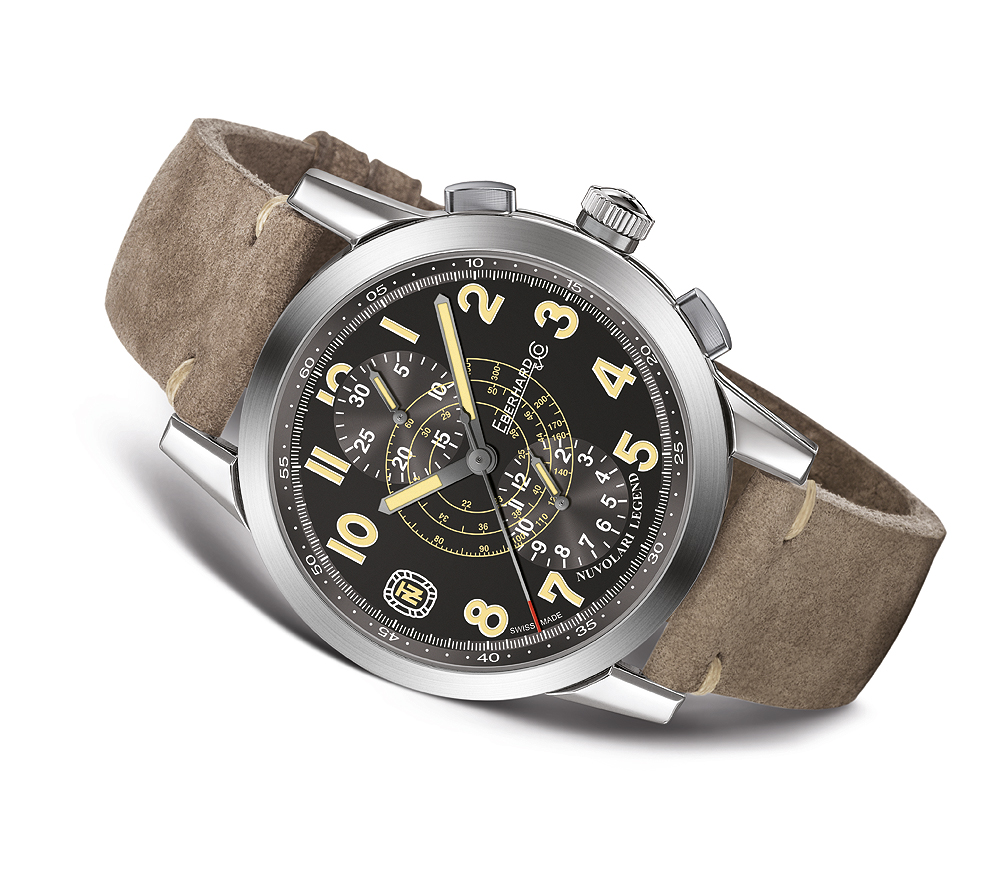
HYT Watches
HYT unveiled its original “hydromechanical” watch, the HYT H1, all the way back during Baselworld 2012. In the years since, we’ve seen the iconoclastic brand introduce new technical updates, new colorways, and a variety of other innovations on its original, innovative system, in which a pair of angled bellows propels a colored fluid through a capillary to indicate the motion of the minutes, while the hours are indicated with a central jumping hand. (For those less familiar with how this complex system works, and curious about the technological details, we’d urge you to peruse our in-depth feature on the original HYT watch, here, as well as our profile of the HYT company, here). Among the hydromechanical horologists’ offerings are a number of eye-catching skull-themed watches, the rectangular, linear-timekeeping H3 model, and the H20 model (below), unveiled at SIHH 2018, which has a much more streamlined and minimalist look than its predecessors; HYT describes the case shape as “resembling a smoothed stone that has weathered time to perfection.” Also notable are the design of the “floating” hour numerals and markers, which are visible from the side thanks to the shape of the crystal.
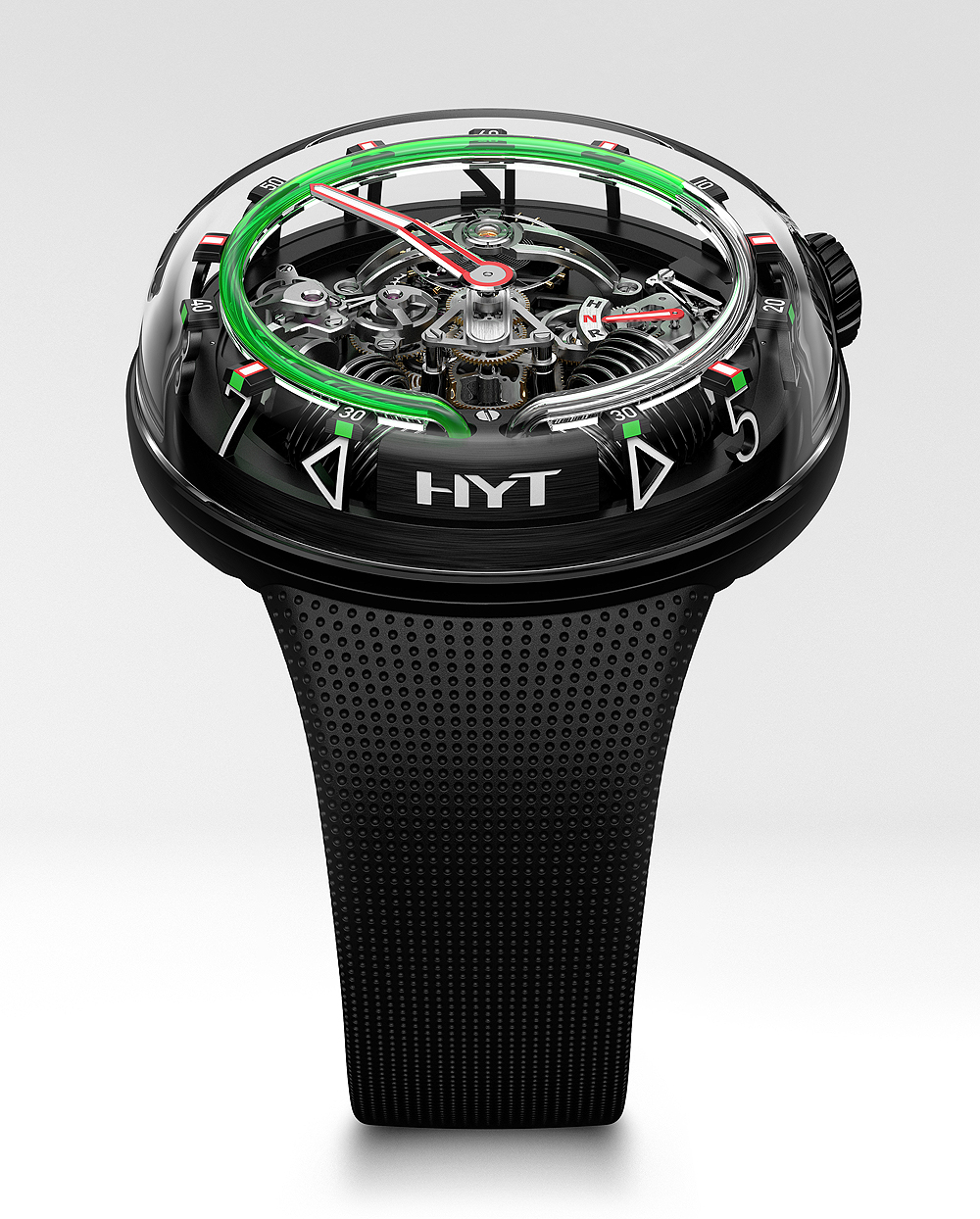
Maurice Lacroix
Founded in 1975, Maurice Lacroix has been a mainstay on the luxury watch scene and has established itself as a producer of a wide variety of timepieces, from affordable sports models to expensive, high-horology complications. The watchmaker has produced its own in-house movements since 2006, and among its most notable technical achievements is the Masterpiece Gravity, the first watch to have its movement’s entire assortment — balance staff, pallet lever, pallet staff, escapement wheel and escapement wheel pinion — made of lightweight, self-lubricating silicon. Maurice Lacroix’s watchmakers built the movement in a way that the most eye-catching components, including the huge, oscillating balance wheel and moving pallet lever, are visible on the dial side. The watch gets its name “Gravity” from the multi-level construction that makes it appear as though the off-centered hours-and-minutes subdial is floating beneath the domed sapphire crystal and above the movement. On the sportier side are models like the new Aikon Automatic Chronograph Limited Edition (below), an attractive update to the expansive Aikon line-up that was relaunched last year.
Montblanc
Since the acquisition of the venerable, historically significant Minerva manufacture by parent company Richemont in 2006, Montblanc has been embracing that Swiss watchmaker’s rich history in its ongoing mission to move beyond its renowned role as a purveyor of fine writing instruments and stake its claim among the top-tier maisons of high watchmaking. In recent years, the brand has revamped and refocused many of its watch families, perhaps most notably the 1858 collection, which takes its name from the founding year of Minerva, an acclaimed maker of chronographs. With 2018 marking Minerva’s (now Manufacture Montblanc’s) 160th anniversary, Montblanc incorporated many of its historic design codes into this modern collection, along with a “mountain exploration” theme (Montblanc is, after all, named after a mountain). The dials offer several period-appropriate details from early Minerva watches, including cathedral-shaped, cloisonné-style hour and minute hands, railway minute tracks, tachymeter scales on the outer edges of the chronograph models, and a circa-1930s Montblanc logo in a historical font. The collection’s dual-time model, the 1858 Geosphere (below), was made available this year in a new bronze case and khaki-green dial. On the technical sides of things, each movement used inside the Montblanc 1858 Collection is subjected to the Montblanc Laboratory Test 500, which consists of three weeks of non-stop testing that effectively simulates the first year of life for a Montblanc timepiece.
